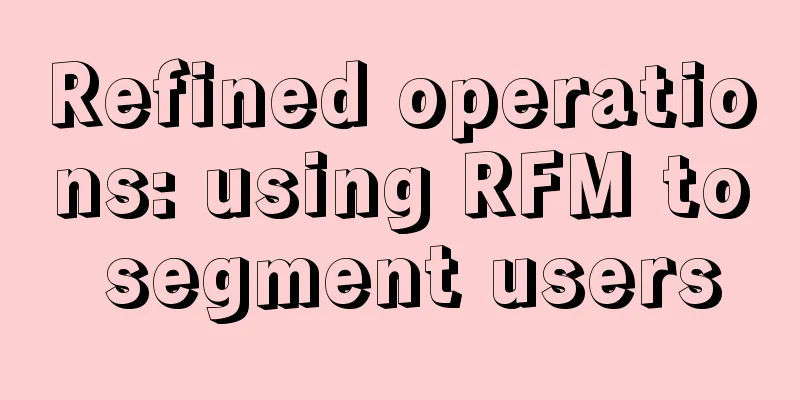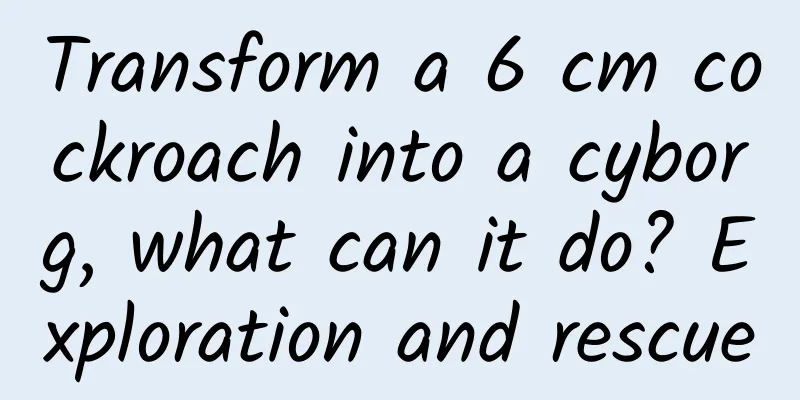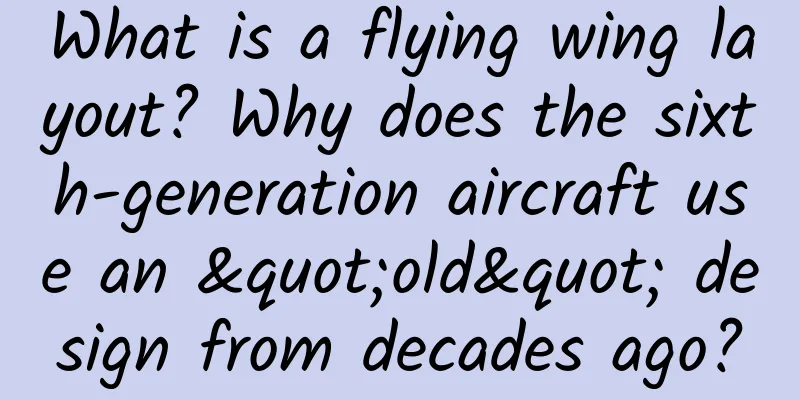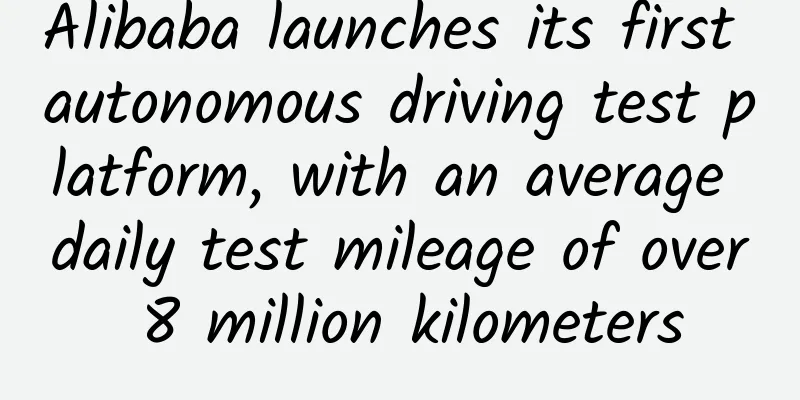Refined operations: using RFM to segment users

|
The RFM model is not difficult to use. It is a model that everyone can use. It has a wide range of applications and can be used in operations , sales, marketing, etc. Today I will introduce to you the RFM model and how to use the RFM model for user analysis. The RFM model is not difficult to use and is a model that anyone can use. It has a wide range of applications and can be used in work such as Internet operations , e-commerce operations , sales, and marketing. 1. Introduction to RFM Model1. The RFM model is one of many customer relationship management (CRM) analysis methods, which can conveniently, quickly and effectively quantify user value and profitability . 2. The RFM model has three elements: Recency (the time since the last transaction), Frequency (transaction frequency), and Monetary (transaction amount). R value (time since the last transaction) The time since the user's last transaction. The shorter the interval, the larger the value, and these customers are the group most likely to respond to the activity. F value (transaction frequency) The number of purchases made by a user within a limited time period. The customers who buy most frequently are also the customers with the highest satisfaction and loyalty. M value (transaction amount) The transaction amount of users can be divided into cumulative transaction amount and average transaction amount. Different data sources can be used for modeling and analysis according to different purposes. 3. Based on the indicators of the three values, we can classify them into the following 8 categories . Calculate the average of R value, F value, and M value respectively, and then fill in the corresponding customer type based on the user's data. “↑” indicates that the value is greater than the mean, and “↓” indicates that the value is less than the mean. 2. Using the RFM model to segment users1. One-dimensional analysisAs the name suggests, one-dimensional means using one of the three categories of RFM to conduct user analysis. One-dimensional analysis can be used to make quick decisions when very precise data is not needed. It is also suitable for some data with relatively small amount or specific users. For example, if only the M value is used for stratification, users can be divided into low-consumption users and high-consumption users; or low-level, medium-level, high-level, etc. The well-known " 80/20 rule " (also known as the "Pareto principle") once gave the following explanation: 80% of a company's revenue comes from 20% of its users, so in some activities, some preference can be given to high-spending users. 2. Two-dimensional analysisIn some cases, we only need to use two of the three R FM categories for classification . For example, for an e-commerce store with a single average order value, since everyone’s M value is similar, we only need to perform classification analysis based on the R value and F value. Let me give you a demonstration using one of my previous cases. The data classification in the table is not rigid. You need to analyze your company's business and make adjustments to select the data that suits you. Through such a table, you can know the user's situation very clearly.
The next step is to adopt different countermeasures for users in different quadrants, recall those who should be recalled, abandon those who should be abandoned, and concentrate firepower on attacking key users. Then continue to adjust - try - optimize - summarize - optimize to come up with the best solution. 3. Three-dimensional analysisIf you have successfully understood the two-dimensional analysis, the three-dimensional analysis is not difficult. It is just adding a dimension on the basis of the previous one. Many people will ask, if all three dimensions use 5 categories, then there will be 5X5X5=125 quadrants in the end. Isn’t this too many? In actual applications, it is not necessary to divide the quadrants so finely, and you can consider it based on the company's business situation. For example, if R and FM have 2 values each, then there are 8 quadrants in total; if R:F:M=3:3:3, then there are 27 quadrants. The RFM model only provides an idea and method. People who use it cannot work in isolation. They must first understand the company's business and have a certain understanding of the users. Only in this way can the role of the RFM model be maximized. Thank you everyone. Source: |
<<: Mid-Autumn Festival mooncake money-making project, how profitable is selling mooncakes?
>>: How does information flow advertising highlight selling points? Share 4 tips!
Recommend
Don’t know where to start with CPC optimization? This is how Ready Player One plays!
“ Information flow ”, “oCPC”, and “creativity”, w...
Practical sharing: What is the hooked addiction model? How to use it to improve user activity and stickiness?
Let me share a new term, the HOOKED addiction mod...
How much does it cost to create an e-commerce mini program in Kizilsu Kirgiz?
Mini programs provide convenience for publicity a...
The Quotes of Steve Jobs You Haven't Heard of - Another Steve Jobs
[[125806]] Deciding what not to do is just as imp...
Among so many monkeys, who is "Wukong"?
Recently, many netizens were instantly melted by ...
Analysis of marketing strategies under the trend of “her economy”!
• Introduction• The purpose of female consumers b...
How can brands leverage marketing opportunities on Labor Day?
For a company, there are never enough festivals, ...
You can make money by posting pictures on Tik Tok! The practical document is worth 1,299 yuan and is full of useful information!
You can make money by posting pictures on Tik Tok...
Is the crash rate of iOS higher than that of Android? Data from Tingyun tells you the truth
The rapid development of mobile Internet and smar...
Southeast Asia Automotive Wars: 300 units of Xiaopeng X9 pure electric MPVs are heading to Thailand, and the industry is undergoing major changes
On February 22, at Guangzhou Port, 300 units of X...
Dating Multiplication Technique online reading book, Dating Multiplication Technique pdf Baidu network disk download
Dating Multiplication Technique online reading bo...
Who will take advantage of the trend and take off first in the smart TV industry?
The successive participation of traditional IT gi...
We’ve thought of all the copywriting for brands leveraging the Dragon Boat Festival for you!
June is really a month that makes operations copy...
Facebook enters live video streaming. Will live streaming become a new trend?
Apple held its autumn new product launch conferen...
How to achieve growth on the B-side? Let’s take a look at the actual cases of Alibaba designers!
Growth design is a hot topic nowadays. More and m...




![Operate the local delivery ordering group project, zero threshold operation, simple and fast monetization [Video Course]](/upload/images/67cc30221a0d9.webp)




